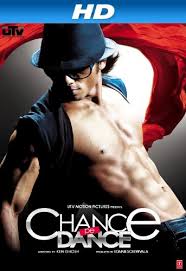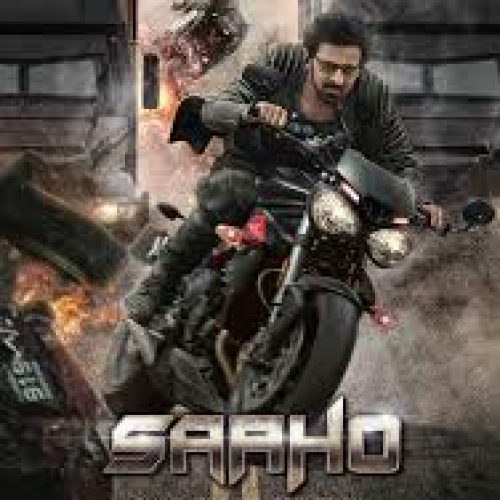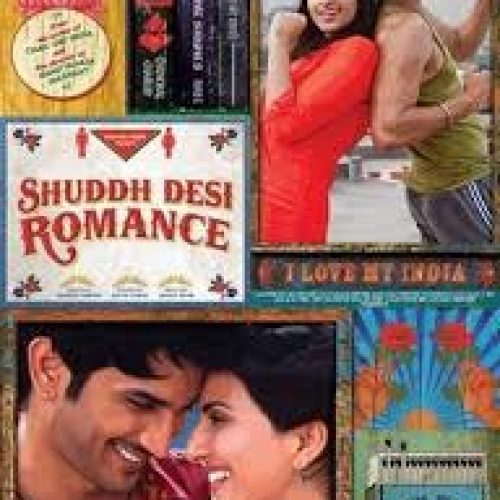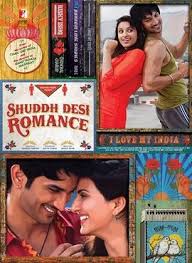In a tale where ambition meets resilience, this movie stars Shahid Kapoor and Genelia D’Souza in a dance-centric, inspirational drama. Set against the bustling backdrop of Mumbai in the early 2000s, the story dives into the struggles and triumphs of a young dancer chasing his dream in the Bollywood film industry. Directed by Ken Ghosh, this film fits into the musical drama genre, combining vibrant dance sequences with the emotional rollercoaster of an artist’s journey.
The plot follows Sameer Behl, a passionate and talented dancer who arrives in Mumbai with big dreams of making it as a film star. Despite facing several setbacks and rejections, he remains undeterred, taking up odd jobs to sustain himself and keep his passion alive. The turning point comes when he stumbles upon a dance audition for a major Bollywood film. Along the way, he meets Tina, a charming choreographer who believes in his talent and becomes his emotional anchor. Their friendship blossoms as she encourages him to stay focused amidst a whirlwind of struggles, sacrifices, and intense competition. The story builds up to a nail-biting climax where Sameer must overcome his own doubts and challenges in order to seize the ultimate opportunity he’s been waiting for.
One of the most notable aspects of the film is Shahid’s performance. Known for his dance skills, Shahid brings an incredible amount of energy and charisma to Sameer’s character. His dance sequences are mesmerizing, with a blend of technical skill and expressive power that captures both his dedication and raw talent. Whether he’s performing street-style hip-hop or high-energy Bollywood numbers, Shahid’s seamless movements add authenticity to Sameer’s aspirations. His portrayal of a struggling artist on the brink of giving up feels heartfelt, making viewers root for his success. Genelia, as Tina, complements him well with her bubbly personality and supportive role. While she doesn’t have as many dance moments, her chemistry with Shahid adds warmth to the storyline, and she successfully portrays Tina’s passion for choreography and her empathy for Sameer’s struggles.
The direction by Ken Ghosh, however, comes across as somewhat formulaic. While he effectively captures the glitz and chaos of Mumbai’s entertainment industry, the narrative often feels predictable. Ghosh’s focus on depicting the life of a “struggling artist” is sincere, but it lacks depth, as it relies heavily on tropes rather than exploring the nuances of Sameer’s journey in a unique way. That being said, Ghosh’s portrayal of the dance world is visually engaging, with attention given to rehearsals, auditions, and the behind-the-scenes grind that dancers face. It’s clear that the director has tried to keep the storyline uplifting and hopeful, yet at times, it misses the grit that would make Sameer’s struggle more impactful.
The music, composed by Adnan Sami, is another highlight of the film. Tracks like “Pe… Pe… Pepein” and “Pump It Up” are catchy and energetic, serving as anthems for dance enthusiasts and amplifying the film’s vibrant spirit. These songs not only showcase Shahid’s dancing prowess but also resonate with the audience as motivational tracks. Sami’s music brings a contemporary edge to the film, blending upbeat tunes with softer, inspirational numbers that align well with Sameer’s emotional journey. The background score, while not overly memorable, complements the scenes well, especially in the dance-off sequences, where it builds tension and excitement.
Cinematography by Hari K. Vedantam effectively captures Mumbai’s energetic atmosphere, particularly in scenes featuring the city’s bustling streets, dance studios, and towering billboards. The dance sequences are shot in a way that highlights Shahid’s talent, with close-up shots that capture his expressive face and wide shots that give viewers a full view of his choreography. However, some scenes could have benefitted from more dynamic camera movements to enhance the dance sequences’ impact. The lighting choices during nighttime scenes or indoor rehearsal sequences provide a gritty look at Sameer’s struggle, while the brighter, neon-lit stages depict the allure of the dance world he’s aiming to conquer.
Costume design also plays a subtle yet essential role in conveying Sameer’s journey. From his casual, worn-out attire that reflects his humble beginnings to the more polished, stage-ready outfits as he progresses, the costumes add to his character’s development. Tina’s wardrobe, as a modern-day choreographer, is trendy and comfortable, highlighting her free-spirited personality while keeping her relatable. The costuming choices for dance auditions and rehearsals lend authenticity to the setting, and overall, the design work captures the varied styles of dancers in Mumbai’s entertainment industry.
The film does struggle with some pacing issues, especially in the first half, where the storyline moves slowly through repetitive setbacks, making it feel dragged out. While this is likely intended to underscore Sameer’s resilience, it sometimes feels redundant. Editing, too, could have been tighter to create a more streamlined narrative, especially in scenes that linger on unnecessary drama. Despite these minor flaws, the second half picks up momentum, with a series of high-energy dance numbers and emotionally charged moments that elevate the film’s appeal.
Overall, this movie provides a solid dose of inspiration, blending energetic dance sequences with the story of one man’s journey to achieve his dreams. While it may lack a unique perspective on the struggles of artists, it makes up for it with Shahid’s magnetic screen presence and a lively soundtrack that stays with you. The film’s message about perseverance and believing in oneself is universal, making it relatable for audiences, especially aspiring dancers or performers. For those looking for a motivational film packed with dynamic dance moves, engaging music, and a feel-good storyline, this movie is an entertaining choice, even if it doesn’t delve too deeply into the darker realities of the industry.







